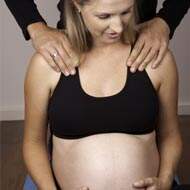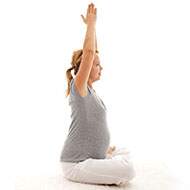Pregnancy Massage And Its Contraindications
With pregnancy, a woman’s body goes through several physiological changes, as well as psychological changes.
As wonderful as the feeling of being pregnant is, it sometimes will bring in the woes such as leg pain (spider veins), back pain, tiredness, fatigue, stress, and sometimes due to excessive hormonal changes depression and anxiety.
Massage therapy has long been in used for relaxation, rejuvenation, and to relieve stress from the muscles and tissues but are they really safe for pregnant mothers? Pregnancy massages are massage therapies that are that designed specifically for expectant mothers. It is different from regular massages because it makes use of different techniques, avoids certain forms of traditional massaging, and it revolves around the proper positioning and support of the pregnant mother, as compared to normal massage therapies. Studies have shown pregnancy massage therapies to improve stress conditions, reduce leg pain and back pain, and promote better sleep. But it also comes with contraindications. Let us look at these in a little more detail:
Pregnancy Complications
Although pregnancy can be a very exciting time in a woman’s life, some pregnancies have complications attached to it due to certain circumstances or conditions. Pregnancy massages concentrate on improving circulation and inducing relaxation by working on certain parts of the body. There specific points in the body that are connected to the pelvic and uterus, hence expectant mothers with complications such as pregnancy induced hypertension, preeclampsia, swelling due to high blood pressure, sudden severe headaches, previous pre-term labor, and high-risk pregnancy should avoid a pregnancy massage. It is always best to consult your doctor before considering a pregnancy massage.
Specific Pressure Points
Certified pregnancy massage therapists are trained on what pressure points to avoid when performing a pregnancy massage. These pressure points are:
- Ankles – some points near the ankles are connected to the uterus and pelvic region, and when massaged can cause them to contract.
- Lower torso – the lower back, abdomen, and the sacrum are avoided to avoid potential harm or injury to the fetus, and trauma to the uterus.
- Hands – there are two pressure points that should be avoided on the hands during pregnancy massages. These are the fleshy part between the thumb and the forefinger, and a certain area around the wrists. Both areas can cause contractions.
Health Conditions
Women should only consider pregnancy massages after the first-trimester, as miscarriage usually occurs in the first 12 weeks of pregnancy. If you have had or still have underlying health conditions, it may be best to avoid a pregnancy massage. Women often experience high blood pressure during pregnancy, and a massage can often aggravate this condition as it works on circulation through massaging techniques. Your doctor will be the best person to guide and advice you as he will be aware of your existing medical conditions and the consequences of having a pregnancy massage on them.
High-risk Pregnancy
There are certain complications that sometimes develop during pregnancy or can be pre-existing, such as gestational diabetes, preeclampsia, eclampsia, preterm labor, and HIV/AIDS.
These conditions qualify in the high-risk pregnancy category. Women who have been diagnosed with these conditions should avoid a pregnancy massage.
Vein Considerations
Thromboembolism, Deep Venous Thrombosis and Pulmonary Embolism are some risk factors that could occur during pregnancy. Pregnancy increases the chances of women developing blood clots in the veins of their legs. This could pose as a potential risk to both mother and child. Women with either of these conditions should seek advice from their physician before getting a pregnancy massage.
Cramping or Bleeding
Severe cramping and/or bleeding, especially during early pregnancy stages are usually indicative of a miscarriage or ectopic pregnancy, and should be brought to the notice of your physician immediately. Pregnancy massages are strictly not recommended for women experiencing these symptoms.
Breast Stimulation
Massaging the breasts, especially the nipples, stimulates a release of the oxytocin hormone into the bloodstream, which causes the uterus to contract. This is strictly recommended only to be used during labor, after the water has broken.
Blood Clots
Blood volume decreases considerably during pregnancy, increasing the levels of anti-coagulants in the blood to prevent hemorrhaging during labor and delivery. These changes elevate a pregnant woman’s risk of getting blood clots, especially in the lower legs, calves, or inner thighs. Massaging the legs can sometimes dislodge a blood clot, posing potential harm to the expectant mother. It is best to avoid pregnancy massages if you have blood clots during pregnancy.
Acupressure and Reflexology
These are two massage techniques that induce labor by dilating the cervix, and helping the baby to descend. Acupressure and reflexology massaging during pregnancy is not advised to avoid the ovaries and uterus points. It is however becoming famous for its role in aiding and making labor less painful.
Before considering pregnancy massage, it is vital to keep the contraindications in mind. If all conditions are favorable and you get the green signal from your doctor, be sure to find a certified pre-natal massage therapist.



